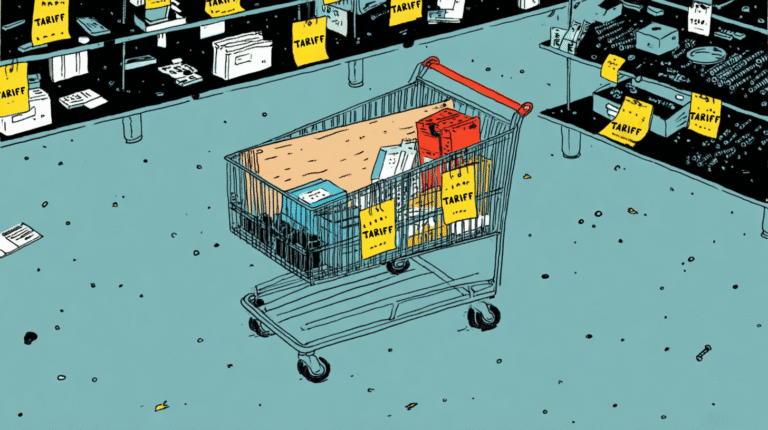Vertical mergers may be the solution.
Until the Supreme Court decides whether Trump’s tariffs are constitutional, American businesses are stuck in limbo—and the best way out invites antitrust scrutiny.
During its second-quarter earnings call in August, Home Depot executives discussed the impact of tariffs on its business. The retailer sources over 50% of its products domestically, but despite limited imports, it conceded that it needed to raise prices as a result of the tariffs. During this period of uncertainty, Home Depot and its subsidiary entered into an agreement to acquire building materials distributor Gypsum Management & Supply. This move consolidates their supply chain for building materials, including drywall, ceilings, and steel framing. Likewise, this summer, Walmart opened its first beef facility to create “more resiliency in [its] supply chain.”
Barring Supreme Court intervention—which seems likely, though not certain after this month’s oral arguments—the tariffs are here to stay, making vertical mergers an attractive option for businesses seeking to tariff-proof their operations. If SCOTUS finds that Trump’s tariffs are legal, these mergers could be the first of many among American businesses.
In that case, antitrust regulators pose a real risk to the economy. Antitrust regulators today are more reticent than ever before to bless acquisitions involving vertical mergers without rigorous scrutiny.
Facing tariffs that substantially raise the cost of imported goods, companies have two choices: pass the added costs downstream to consumers; or, as President Trump would prefer, modify their supply chain so that critical inputs are obtained domestically rather than from foreign firms. Supply chain modifications may still raise prices for consumers unless there is some innovation or change in efficiencies that enables companies to choose American firms to work with and also to pay less for the inputs that they once sourced from abroad.
As Home Depot and Walmart show, this innovation is often vertical integration.
Regulators once considered vertical mergers intrinsically unproblematic. In The Antitrust Paradox, Robert Bork argued that vertical mergers produce greater efficiencies between two firms, as there is no longer a cost associated with transacting after the merger has occurred. This idea is reflected in the 1984 iteration of the Justice Department’s Merger Guidelines and the short-lived 2020 Vertical Merger Guidelines, which the Biden administration quickly rescinded.
However, in recent years, academics have cautioned against this traditional view, claiming that the reality is more complex, as these mergers produce a mix of pro- and anti-competitive effects that warrant more rigorous regulatory review. In 2023, the Federal Trade Commission and Justice Department modified the Merger Guidelines to reflect this skepticism. Three days prior, this new approach to vertical mergers gained judicial traction: the Fifth Circuit sided with regulators in blocking a vertical merger between biotechnology firm Illumina and its spinoff, Grail, citing concerns over incentives to foreclose critical inputs from rivals.
Regulators’ new reluctance to accept vertical mergers is consistent with the broader, neo-Brandeisian movement to bolster antitrust enforcement overall. Proponents of this view believe that consolidation of power is suspect, favoring instead an anti-monopoly agenda that they purport is more democratic and socially beneficial.
The neo-Brandeisian frameworks are still in place today. In February, FTC Chairman Andrew Ferguson announced that the agency would continue to follow the 2023 Merger Guidelines because they are “by and large… a restatement of prior iterations of the guidelines, and a reflection of what can be found in case law. That is good reason to retain them.” Contrary to Ferguson’s memorandum, the 2023 guidelines sidestepped modern precedent in favor of older standards and cases that, while never overruled, reflect a more agency-friendly, anti-bigness mentality.
The nexus between tariffs and vertical mergers underscores the stakes of potential enforcement, a threat that is very capable of undermining businesses when they are already scrambling to find solutions.
The Supreme Court might moot this question. If the justices hold that President Trump lacks the authority under the International Emergency Economic Powers Act to issue the tariffs, then businesses will not rush to vertically integrate. But in a tariff-laden economy, other companies may be forced to follow Home Depot and Walmart’s lead. Despite regulators’ readiness to interfere, vertical mergers serve as an important tool to bring production back to the United States—perhaps the only tool left.





